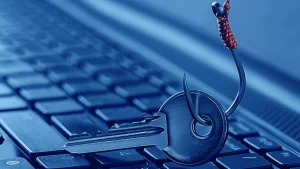Enhance your protection against phishing attacks with heightened awareness and education. Stay vigilant for dubious emails requesting personal information or riddled with errors. Verify the authenticity of Uniform Resource Locators (URLs) and sender addresses. Keep your security measures up-to-date by utilizing multi-factor authentication. Refrain from sharing sensitive data via email. Employ encrypted messaging and Virtual Private Networks (VPNs) for secure communications. Educate your family on online risks and the importance of cybersecurity awareness. Proactive defense remains crucial in thwarting phishing attempts. In our session today, delve into How to prevent phishing attacks and equip yourself with essential knowledge.
Key Takeaways
- Implement multi-factor authentication for added security.
- Regularly update security software to protect against new threats.
- Educate yourself and family on identifying phishing tactics.
- Avoid sharing sensitive information through email.
- Utilize secure communication channels like encrypted messaging and VPNs.
Understanding Phishing Attacks
Understanding Phishing Attacks: A detailed analysis of the strategies and techniques used by cybercriminals to deceive individuals into revealing sensitive information. Phishing attackers commonly use misleading emails, sites, and messages to trick users into divulging personal data such as login credentials or financial information. By exploiting human psychology and employing sophisticated social engineering tactics, cybercriminals manipulate victims into unwittingly compromising their security.
Recognizing Phishing Warning Signs
Phishing alert signs can be identified through careful examination of questionable communication and online interactions. Be on the lookout for dubious emails requesting personal information, immediate action, or containing grammatical errors. Verify for mismatched URLs or unfamiliar sender addresses. Be wary of unforeseen attachments or links. Training on recognizing these signs is essential for digital security at home. Stay vigilant to prevent becoming a target of phishing attacks.
Best Practices for Phishing Prevention
To bolster your defenses against phishing attacks, implementing robust security measures is imperative in safeguarding your personal information and digital assets. Utilize multi-factor authentication, regularly update security software, educate yourself on phishing tactics, and avoid clicking on suspicious links or providing sensitive information through email. By following these best practices, you can significantly reduce the risk of falling victim to phishing attempts.
Implementing Secure Communication Channels
When guaranteeing digital security at home, the deployment of secure communication channels is crucial in safeguarding sensitive information from potential phishing attacks. Utilizing encrypted messaging applications, secure electronic mail services, and VPNs can help safeguard data from unauthorized access. By establishing these secure channels, individuals can reduce the risks associated with phishing attempts and improve their overall digital security stance.

Educating Family Members on Phishing Risks
Ensuring the safety of your digital environment at home involves educating family members about the potential risks associated with online activities, particularly in relation to the malicious schemes aimed at stealing sensitive information. Inform them about identifying suspicious emails, refraining from clicking on unfamiliar links, and being careful with disclosing personal information online. Establishing a culture of cybersecurity awareness within your family is essential to avoid becoming a target of phishing attacks.
Frequently Asked Questions
How Can I Report a Phishing Attack to the Appropriate Authorities?
To report a phishing attack to the relevant authorities, quickly forward the suspicious email or message to the Anti-Phishing Working Group at reportphishing@apwg.org. Include any pertinent information like sender information and timestamps to assist in their investigation and prevention efforts.
Are There Any Tools or Software That Can Help Me Detect Phishing Emails?
Various tools and software exist to aid in detecting phishing emails, such as anti-phishing solutions, email security gateways, and browser plugins. These tools analyze email content, Uniform Resource Locators (URLs), and sender information to flag potential threats, enhancing overall cybersecurity posture.
What Should I Do if I Accidentally Clicked on a Phishing Link?
If you inadvertently clicked on a deceptive link, promptly disconnect from the internet to prevent additional access by the attacker. Notify your IT department or security team about the occurrence for examination and advice on subsequent measures to safeguard your system.
How Do Phishing Attacks Differ From Other Types of Cyber Threats?
Phishing attacks distinguish themselves from other cyber threats by employing deceptive tactics to trick individuals into divulging sensitive information. Unlike malware or ransomware that exploit system vulnerabilities, phishing relies on social engineering to manipulate human behavior for illicit gains.
How Can I Stay Updated on the Latest Phishing Tactics and Trends to Better Protect Myself?
Stay informed on evolving phishing tactics by subscribing to cybersecurity newsletters, following trustworthy security blogs, attending webinars, and participating in online forums. Regularly update your knowledge to strengthen your defense against emerging threats.
Conclusion
In summary, safeguarding personal information from phishing attacks is crucial in today’s digital e. By grasping the subtleties of phishing attacks, identifying warning signs, implementing best practices for prevention, and educating family members on risks, individuals can strengthen their online defenses effectively. It is vital to prioritize vigilance and awareness to navigate the virtual realm confidently, ensuring the security of sensitive data and maintaining peace of mind in an interconnected world.
You May Also Like:





